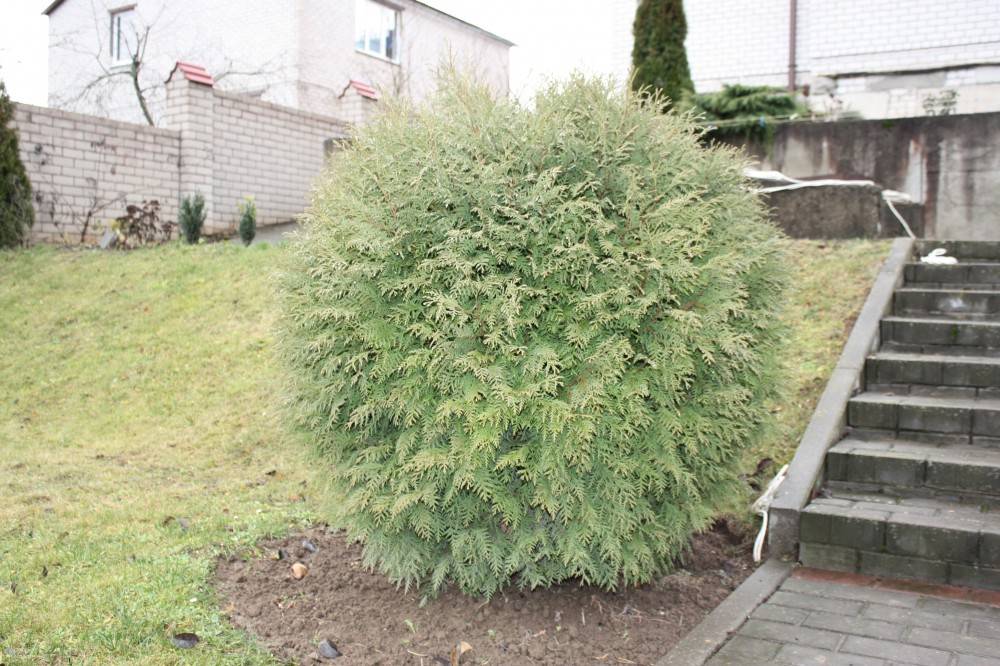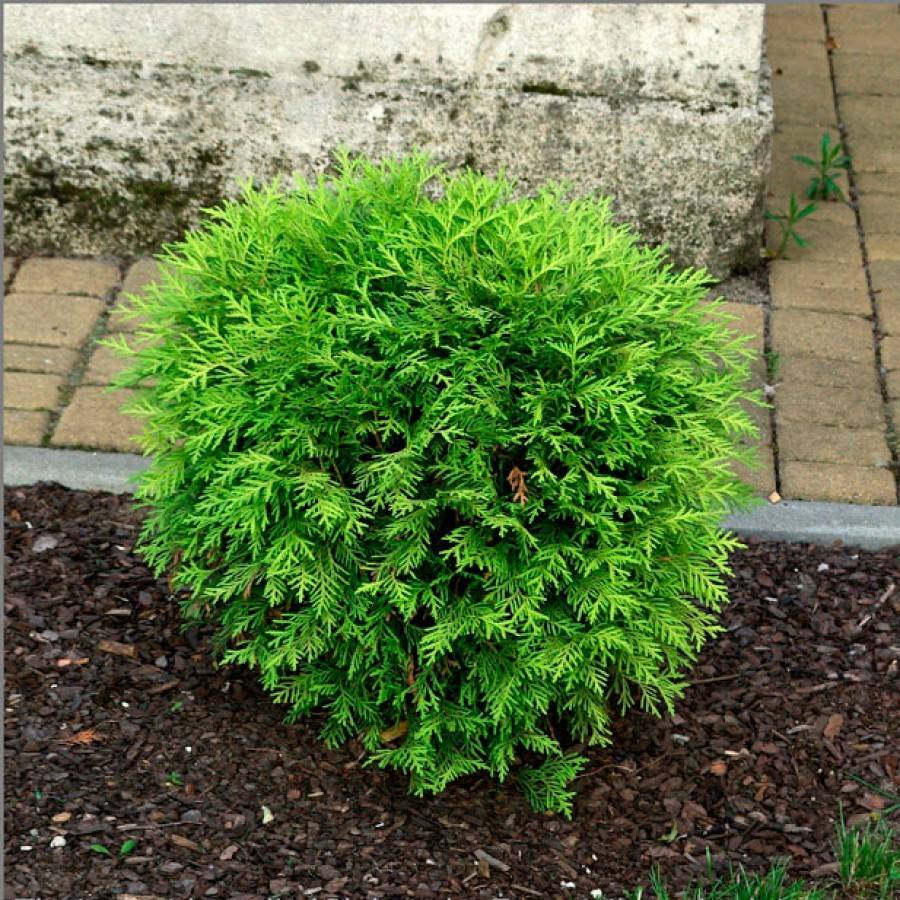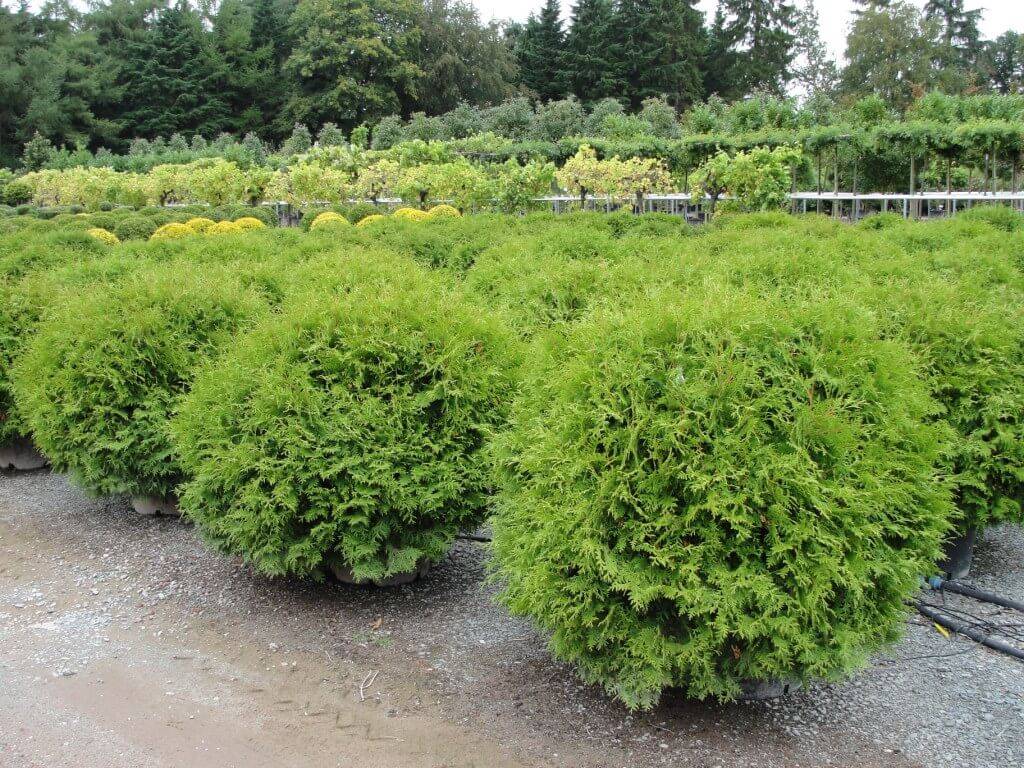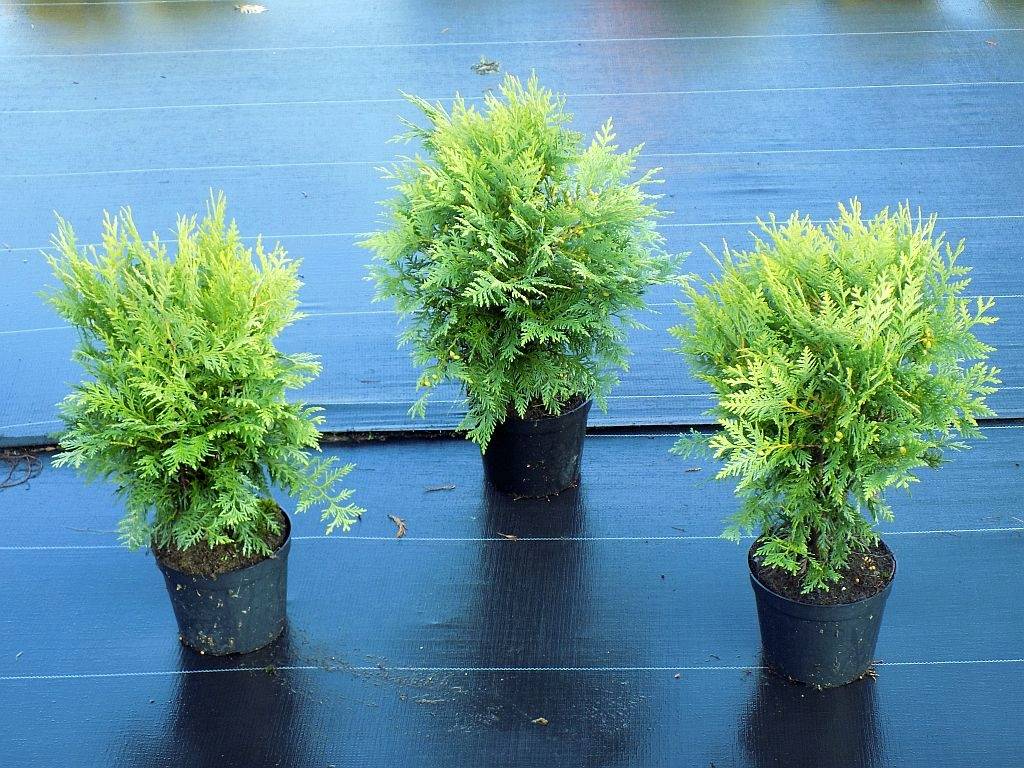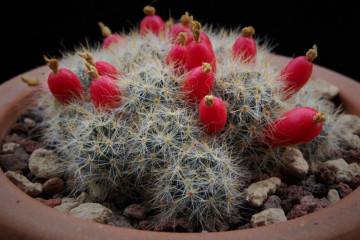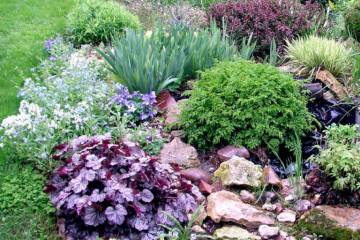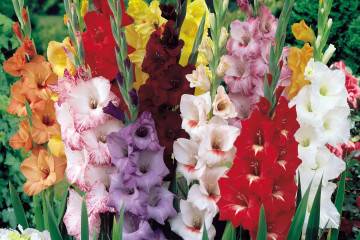Thuja Globoza (Globosa) western spherical - description
Content:
Thuja Globoza (Thuja occidentalis Globosa) is an evergreen dwarf representative of the Cypress family of the genus Tui. Due to its unusual spherical shape, it is widely used in landscape design. It pleases not only the appearance, but also other parameters, for example, the duration of its life: some specimens live for several decades, under good conditions they can cross the age-old line.
Description of the western globular thuja Globosa (Globosa)
Thuja western Globoza belongs to the category of evergreen shrubs. It has been cultivated since the end of the 19th century. The aesthetics and unpretentiousness of this plant only increase its popularity from year to year.
Dimensions (edit)
Botanical description of thuja Globoza:
- the first thing that catches your eye is the correct spherical shape of the plant;
- compactness can be considered synonymous with Globoza. Throughout its life, the shrub does not grow more than 1.5 m, and its width always corresponds to its height;
- leaves are dense, scaly, changing color depending on the season. In spring, the crown is a light green hue, and in winter it is a soft brownish color;
- in autumn, small brown cones with seeds are formed on the shoots.
Thuja occidentalis Globoza can act both as a tapeworm and complement interesting design projects, in which the plant can also be in the center of the composition.
How fast is thuja Globoza growing
Thuja Globoza belongs to slow-growing plants, its annual growth is no more than 3 cm. But this is precisely the beauty of the variety. This variety requires a minimum of space; even the smallest summer cottage is suitable for growing it. A small flower bed at the entrance will be enough.
Planting and caring for thuja Globoza
Planting and caring for this variety of thuja is easy to implement even in the harsh conditions of the Russian climate. Several varieties of thuja Globoza are presented: Globoza Aurea, Globoza Compact, Globoza Nana. All varieties differ slightly from each other in size and color, but their main characteristics are preserved.
How to plant
For planting, you must choose the right site, it is better if it is protected from gusty winds and drafts. The selected place is weeded, the soil is loosened. Saplings are planted in early spring or early autumn. Planting is carried out by transshipment, so a hole is dug in accordance with the size of the seedling's earthen lump. Drainage is poured at the bottom of it. The roots do not need to be deepened unnecessarily into the soil; it is enough to spread them near the soil surface.
A special fertilizer for conifers must be introduced into the pit; it should not contain nitrogen, preferably the presence of potassium and phosphorus. You can also add some compost mixed with peat.
Watering mode
Thuja Globosa prefers weekly watering by sprinkling. If the season is dry, this procedure should be done twice a week. Once a week, the plant should be watered with 10 liters of water under the root. After watering, the soil around the plant is loosened and mulched with peat or sawdust (preferably coniferous plants). The mulch layer should be at least 15 cm.
Top dressing
Top dressing should be started only 3 years after planting. Immediately after the snow melts, the ground around the bush is carefully loosened (so as not to damage the root system close to the top layer of the soil). Further, special fertilizers are applied. It is best to avoid those that contain nitrogen as it will further slow down the growth of the plant. Organic matter should also be applied carefully, in small doses and only in the form of a solution. While the plant is young, additional treatment with phytosporin in the fall is required.
Features of summer care
In the summer period, special care for Globoza is not required, you can do with the following procedures:
- mulching;
- formative pruning of shoots;
- systematic regular watering;
- loosening the soil around the bush.
No other procedures are required.
Preparing thuja Globoza for winter
To prepare for winter, it is worth taking care of the root system of the plant, therefore, first of all, spruce branches are laid out around the trunk. It will help protect Globoza not only from cold weather, but also from rodents, which can cause irreparable damage to the plant. Then the crown is trimmed: all dry, diseased shoots are removed, as well as those that seem superfluous. A special frame is built around the bush, which will protect it from too strong snow pressure, which can damage the shape of the crown.
Reproduction of thuja Globoza
Thuja Globoza propagates by cuttings or seeds. Seed propagation is not popular with gardeners, since the result will have to wait too long. But it is with this method that the seedlings are the most resistant to all negative environmental influences.
Propagation by cuttings
Cutting is the most popular method for reproduction of Globosa, with the help of which the desired number of young shoots can be obtained at the same time. Before proceeding with the procedure, it is worth preparing the room in which the cuttings will be planted. It should be a mini-greenhouse with a relative humidity of at least 70%.
Choose adult long shoots that have reached at least three years of age. It is worth cutting them off the bush in such a way that a small part of the plant bark remains at their ends. Places of cuts on an adult bush must be treated with a solution of potassium permanganate, crushed charcoal or a disinfectant. All leaves must be removed from the cutting, leaving only the twig itself.
Cut cuttings should be put in water with root solution for 12 hours. The branches go deeper to the point where the leaves were. When young shoots begin to appear, the greenhouse can be opened for ventilation. After a short period of time, they are taken out into the street every day to harden. At the same time, watering begins. Only after they have fully adapted to the environment can they be planted in open ground.
Why does thuja Globoza turn yellow
Western thuja Globoza is distinguished by high immunity to infectious diseases, but, despite this, yellowness of leaves and stems can appear on it. Most often this happens due to improper plant care. If the crown turns yellow and dries up in the spring, it means that the shelter for the winter was either incorrect, or insufficient, or excessive, not allowing air to pass through.If this is the problem, you should treat the thuja with biostimulants to start the intensive development of the plant.
In summer, yellowness occurs due to an excess of moisture in the soil. This can be due to over-watering or high groundwater levels. For similar reasons, the development of fungal diseases and the appearance of mold are likely. The solution to the problem is to regularly loosen the soil after watering. Spoiled branches are cut with a sharp knife or pruner, and the entire trunk is treated with an antifungal agent.
Thuja western globose will become a real decoration of any garden. Formative pruning will help shape it into almost any shape, depending on the taste of its owner. The plant will look great in combination with dwarf conifers, in flower beds with bright flowers and even next to alpine slides. It is also possible to grow Globoza as a curb plant. The main thing is to remember that Globosa thuja planted near roads needs constant sprinkling, since dust accumulates on its leaves, which interferes with the normal development and growth of the plant, and also reduces its decorative effect.

